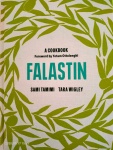When I was small my parents would, when we went camping (ugh), on starry nights, point out the stars and teach us the names and patterns to look out for. One of my favourites was the Seven Sisters or formally the Pleiades star cluster. Fast forward to holidaying on Great Barrier Island a few years ago where we joined Good Heavens for a dark sky experience. I should say that Great Barrier Island has stunning dark skies and these allowed it to become the first island in the world to receive International Dark Sky Sanctuary status. Anyway, each time we go to Great Barrier Island we always try to join Good Heavens for an informed look at the night sky, and I always look for the Seven Sisters.

‘And so?’, I hear you say. Ah well, it was that first time we joined Good Heavens that I became very excited to hear that my (!) Seven Sisters/Pleiades was also the cluster signalling the beginning of Maratiki, Maori New Year, and indeed the cluster was called Matariki in Maori culture.
Māori ancestors possessed a wealth of astronomical knowledge that they referred to as tātai arorangi and used the stars and moon as a calendar with each phase of the Moon indicating the favourable times for planting, fishing or eeling. Traditionally, Matariki was used to determine the coming season’s crop and give thanks for the food of Aotearoa/New Zealand. A warmer season, and therefore a more productive crop yield, was indicated by how bright the stars were.
Matariki is celebrated on the day of the first crescent moon after the reappearance of Matariki, which is why it isn’t on the same day every year. Matariki is used to reset the Maori calendar, which is a lunar calendar and it is visible almost all year, except for right before the Matariki festival starts. This is because, from our perspective on Earth, Matariki is behind the Sun.
This festival time is signalled by the rise of the Matariki (Pleiades) constellation and its stars represent the water, earth, ocean, air and the bounty that comes from them. It is a time for renewal, the end of one growing year and the promise of a new one ahead. Many iwi speak of the seven Matariki stars as a mother and her daughters. The mother is Matariki, and her daughters are Tupu-ā-nuku, Tupu-ā-rangi, Waipunarangi, Waitī, Waitā, and Ururangi.

This year Matariki Festival began on 20 June with the winter solstice and ends on 15 July as the Matariki stars rise in the pre-dawn sky, and usher in the Māori new year.
Eat New Zealand has a programme of, mainly eating, events that will happen around the country and you can have a look here. They note that of the stars in the Matariki constellation, four are directly related to food;
1.Tupuānuku – this star is connected to food grown in the ground
2. Tupuārangi – associated with food which comes from the sky & other elevated food products, such as fruit and berries from the trees.
3. Waitī – this star is connected to fresh water & all of the creatures that live within rivers, streams and lakes.
4. Waitā – this star represents the food gathered from the sea.
In Tamaki Makaurau/Auckland, where I live, Matariki is celebrated by events all around the region. Heart of the City has details of one of my favourites and that is Master Rewi Spraggon’s hāngi which will be on Britomart’s central lawn in Takutai Square. They note:
‘From Wednesday June 26 to Sunday June 30, Hāngi Master Rewi Spraggon and his team from The Maori Kitchen will lay down a hāngi and serve modern takes on ancient kai (food) every lunchtime.
Spraggon has made the revitalisation of the art of hāngi his mission – and sees Britomart as a perfect place to continue this. “We’re losing the art of hāngi because we’re not doing enough of it,” he says. “Doing a hāngi properly in Takutai Square – with soil, fire, hot rocks and baskets of kai – is an excellent chance to remind people how great this cooking method is for creating tasty and healthy kai.”
Spraggon’s food – he’ll be serving hangi wraps, pies, delicious lunchboxes and more – will be accompanied by song, with free live performances by musicians every lunchtime in the square.’
Here is an example of the Maori Kitchen menu from Hāngi Master Rewi Spraggon
On July 7, 2017, Dane McGregor of Baker Gatherer, shared his gran’s Kānga Waru (corn steamed pudding) recipe which he says is a simple, delicious dish to celebrate Matariki. Dane has given me permission to present it here, but please see his site for more details














